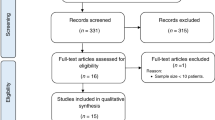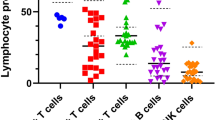Abstract
Outcomes of allogeneic hematopoietic stem cell transplantation (HSCT) for hepatitis-associated aplastic anemia have not been fully evaluated. In the present study, the outcomes of 37 adult patients with hepatitis-associated aplastic anemia who underwent allogeneic HSCT were retrospectively analyzed using the registry database of Japan Society for Hematopoietic Cell Transplantation. The median age of the patients was 24 years (range, 16–61). The median period between diagnosis of hepatitis-associated aplastic anemia and HSCT was 6.0 months (range, 0.5–430.8). Stem cell sources were bone marrow (N = 19) or peripheral blood stem cells (N = 5) from an HLA-identical sibling or bone marrow (N = 11) and cord blood (N = 2) from an unrelated donor. The majority of conditioning regimens were fludarabine-based or high-dose cyclophosphamide-based. In all but 2 cases of early death, neutrophil engraftment was achieved. At the time of analysis, 32 patients were alive, with a median follow-up of 54.1 months. Five-year overall and failure-free survival rates were 86.0% (95% CI, 69.4–93.9%) and 75.0% (95% CI, 57.4–86.2%), respectively. Despite the heterogeneity in transplant procedures in a small number of patients, these results suggest that allogeneic HSCT is safe for use in hepatitis-associated aplastic anemia with a low rate of transplant-related mortality.

Similar content being viewed by others
References
Brown KE, Tisdale J, Barrett AJ, Dunbar CE, Young NS. Hepatitis-associated aplastic anemia. N Engl J Med. 1997;336:1059–64.
Rauff B, Idrees M, Shah SA, Butt S, Butt AM, Ali L, et al. Hepatitis-associated aplastic anemia: a review. Virol J. 2011;8:87.
Gonzalez-Casas R, Garcia-Buey L, Jones EA, Gisbert JP, Moreno-Otero R. Systematic review: hepatitis-associated aplastic anaemia—a syndrome associated with abnormal immunological function. Aliment Pharmacol Ther. 2009;30:436–43.
Osugi Y, Yagasaki H, Sako M, Kosaka Y, Taga T, Ito T, et al. Antithymocyte globulin and cyclosporine for treatment of 44 children with hepatitis-associated aplastic anemia. Haematologica. 2007;92:1687–90.
Hayakawa J, Kanda J, Akahoshi Y, Harada N, Kameda K, Ugai T, et al. Meta-analysis of treatment with rabbit and horse antithymocyte globulin for aplastic anemia. Int J Hematol. 2017;105:578–86.
Wang H, Tu M, Fu R, Wu Y, Liu H, Xing L, et al. The clinical and immune characteristics of patients with hepatitis-associated aplastic anemia in China. PLoS One. 2014;9:e98142.
Witherspoon RP, Storb R, Shulman H, Buckner CD, Deeg HJ, Clift RA, et al. Marrow transplantation in hepatitis-associated aplastic anemia. Am J Hematol. 1984;17:269–78.
Locasciulli A, Bacigalupo A, Bruno B, Montante B, Marsh J, Tichelli A, et al. Hepatitis-associated aplastic anaemia: epidemiology and treatment results obtained in Europe. A report of The EBMT aplastic anaemia working party. Br J Haematol. 2010;149:890–5.
Safadi R, Or R, Ilan Y, Naparstek E, Nagler A, Klein A, et al. Lack of known hepatitis virus in hepatitis-associated aplastic anemia and outcome after bone marrow transplantation. Bone Marrow Transplant. 2001;27:183–90.
Atsuta Y. Introduction of transplant registry unified management program 2 (TRUMP2): scripts for TRUMP data analyses, part I (variables other than HLA-related data). Int J Hematol. 2016;103:3–10.
Kanda Y. Investigation of the freely available easy-to-use software ‘EZR’ for medical statistics. Bone Marrow Transplant. 2013;48:452–8.
Mori T, Koh H, Onishi Y, Kako S, Onizuka M, Kanamori H, et al. Impact of cyclophosphamide dose of conditioning on the outcome of allogeneic hematopoietic stem cell transplantation for aplastic anemia from human leukocyte antigen-identical sibling. Int J Hematol. 2016;103:461–8.
Mary JY, Baumelou E, Guiguet M. Epidemiology of aplastic anemia in France: a prospective multicentric study. The French Cooperative Group for Epidemiological Study of Aplastic Anemia. Blood. 1990;75:1646–53.
Liang DC, Lin KH, Lin DT, Yang CP, Hung KL, Lin KS. Post-hepatitic aplastic anaemia in children in Taiwan, a hepatitis prevalent area. Br J Haematol. 1990;74:487–91.
Chen HF, Xu BX, Shen HS, Li ZY, Jin LJ, Tang JQ, et al. Efficacy and safety of immunosuppressive therapy in the treatment of seronegative hepatitis-associated aplastic anemia. Drug Des Dev Ther. 2014;8:1299–305.
Ohara A, Kojima S, Okamura J, Inada H, Kigasawa H, Hibi S, et al. Evolution of myelodysplastic syndrome and acute myelogenous leukaemia in children with hepatitis-associated aplastic anaemia. Br J Haematol. 2002;116:151–4.
Pongtanakul B, Das PK, Charpentier K, Dror Y. Outcome of children with aplastic anemia treated with immunosuppressive therapy. Pediatr Blood Cancer. 2008;50:52–7.
Maury S, Bacigalupo A, Anderlini P, Aljurf M, Marsh J, Socie G, et al. Improved outcome of patients older than 30 years receiving HLA-identical sibling hematopoietic stem cell transplantation for severe acquired aplastic anemia using fludarabine-based conditioning: a comparison with conventional conditioning regimen. Haematologica. 2009;94:1312–5.
Bacigalupo A, Locatelli F, Lanino E, Marsh J, Socie G, Maury S, et al. Fludarabine, cyclophosphamide and anti-thymocyte globulin for alternative donor transplants in acquired severe aplastic anemia: a report from the EBMT-SAA Working Party. Bone Marrow Transplant. 2005;36:947–50.
Acknowledgements
The authors would like to thank all the physicians and data managers of each transplant center and the staff member of Japanese Data Center for Hematopoietic Cell Transplantation.
Author information
Authors and Affiliations
Corresponding author
Ethics declarations
Conflict of interest
Mineo Kurokawa receives consulting fees from Sanofi.k.k.
Additional information
Publisher's Note
Springer Nature remains neutral with regard to jurisdictional claims in published maps and institutional affiliations.
About this article
Cite this article
Mori, T., Onishi, Y., Ozawa, Y. et al. Outcome of allogeneic hematopoietic stem cell transplantation in adult patients with hepatitis-associated aplastic anemia. Int J Hematol 109, 711–717 (2019). https://doi.org/10.1007/s12185-019-02644-8
Received:
Revised:
Accepted:
Published:
Issue Date:
DOI: https://doi.org/10.1007/s12185-019-02644-8




